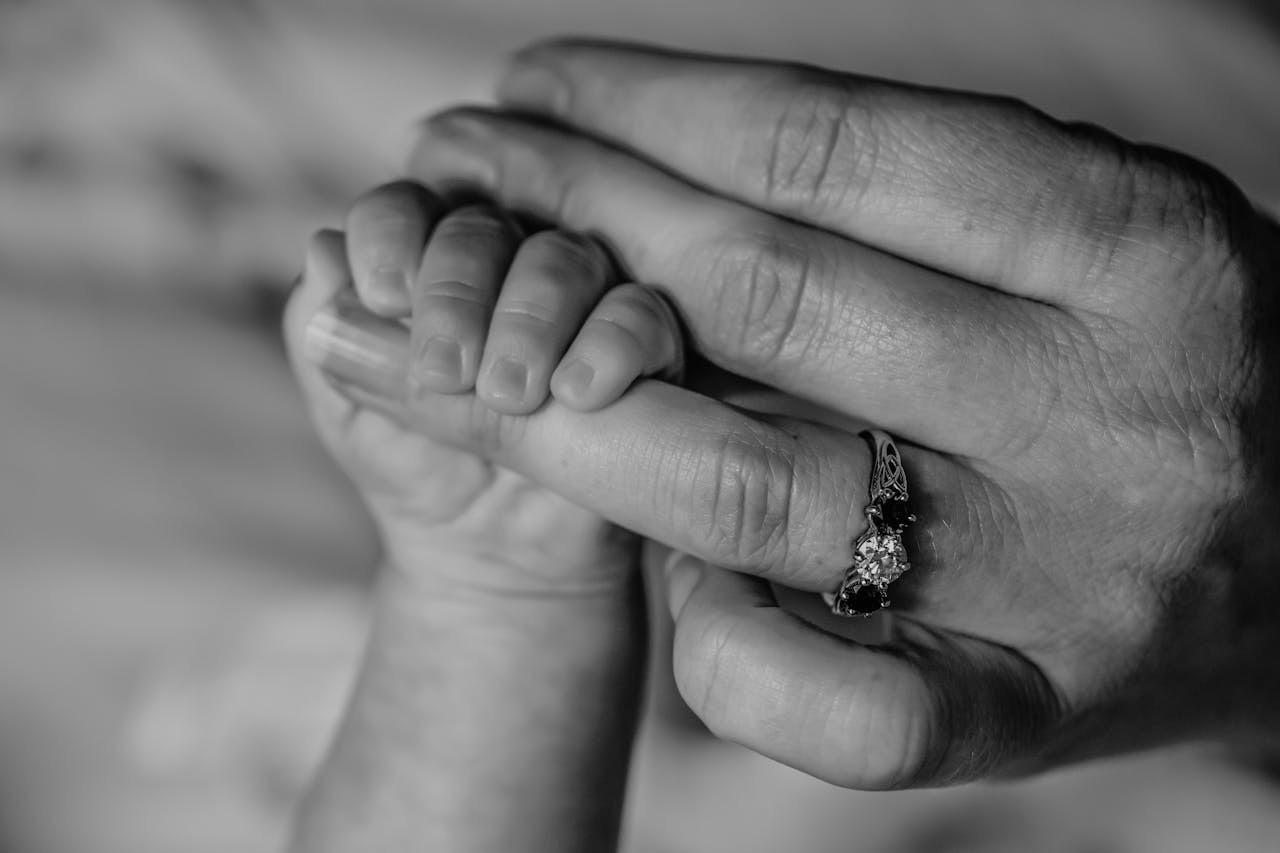One of the most fascinating and surprising behaviors of newborns is their incredibly strong grip. When you place your finger in a baby’s palm, their tiny hand often clasps around it with surprising force, sometimes strong enough to make you wonder how such a small person could exhibit such strength. This reflex, known as the palmar grasp reflex, is an instinctive behavior that all healthy newborns display.
But why do babies have such a strong grip? Is it a random quirk, or does it serve a deeper purpose in human development? In this article, we will explore the reasons behind this strong grip in babies, the role of reflexes in infant development, and what it reveals about neurological function and evolution. We will also delve into how this grip changes as babies grow and what it means for their physical and cognitive development.
The Palmar Grasp Reflex: The First Sign of Strength
The palmar grasp reflex is an innate reflex present at birth and can be observed in almost all healthy newborns. This reflex causes a baby’s hand to close tightly around any object placed in their palm, such as a finger or a small toy. The grasp can be surprisingly strong, with some babies able to hold on tightly enough to lift their own weight briefly.
This reflex is involuntary and is triggered when the skin on the baby’s palm is stimulated. The baby’s grip is immediate and firm, and while it might appear as though the baby is consciously grabbing the object, it is purely an automatic response.
How the Palmar Grasp Reflex Works
The palmar grasp reflex is controlled by the central nervous system (CNS) and involves a direct connection between the nerves in the skin and the muscles of the hand. When an object touches the baby’s palm, sensory nerves send signals to the spinal cord and brain. The CNS then triggers a motor response, causing the muscles in the baby’s hand to contract, leading to the grasping motion.
This reflex is present at birth and usually lasts until the baby is around 4 to 6 months old, at which point it gradually fades as the baby’s voluntary motor control begins to develop.
Evolutionary Roots of the Palmar Grasp Reflex
One of the most widely accepted explanations for the palmar grasp reflex is that it has evolutionary significance. This reflex is thought to be a remnant of our primate ancestors, who relied on their strong grip for survival. Baby primates, such as monkeys and apes, have a similar reflex that allows them to cling to their mothers’ fur. This was crucial for survival in the wild, as clinging tightly to their mothers enabled baby primates to be carried safely while their mothers moved through trees or traveled long distances.
For human babies, this reflex is likely a vestige of that evolutionary adaptation, though human babies no longer need to cling to their mothers in the same way. While modern humans don’t have fur for babies to cling to, the strong grip reflex remains as a reminder of our species’ evolutionary history.
The Purpose of a Baby’s Strong Grip
Though the palmar grasp reflex is no longer essential for survival in the way it was for our primate ancestors, it still serves several important functions in the early stages of a baby’s development.
1. Ensuring Early Bonding and Connection
One of the key purposes of a baby’s strong grip is to promote bonding between the infant and their caregivers. When a baby grasps a parent’s finger or hand, it creates an immediate sense of connection. This simple interaction helps to strengthen the emotional bond between the baby and their parents, fostering feelings of closeness and security.
Research shows that touch plays a vital role in emotional development and bonding. When a baby’s grip is met with warmth and affection from their caregivers, it contributes to the development of a secure attachment, which is essential for a child’s emotional and psychological health later in life.
This physical connection through the baby’s grip also encourages caregivers to interact more closely with the infant, creating a positive feedback loop of nurturing touch and physical closeness, which is vital for healthy development.
2. Developing Motor Skills and Muscle Strength
While the palmar grasp reflex is involuntary, it is one of the earliest ways that babies begin to exercise their hand and arm muscles. The repeated action of gripping and releasing objects helps babies develop their motor skills and muscle strength, both of which are essential for future physical milestones.
As babies grow, their reflexive grip evolves into intentional movements. This process helps strengthen the muscles in their hands and arms, laying the groundwork for more complex motor skills such as reaching, grasping, crawling, and eventually walking.
Over time, babies gain more control over their hand movements, transitioning from involuntary reflexes to voluntary actions that require coordination between the brain and muscles. The development of this motor control is an important part of a baby’s physical development.
3. Preparing for Fine Motor Skills
In addition to building muscle strength, a baby’s strong grip plays an important role in developing fine motor skills. Fine motor skills involve the precise movements of small muscles, particularly in the hands and fingers, and are necessary for tasks such as grasping objects, feeding, writing, and manipulating small items.
The early grasp reflex helps babies become familiar with the sensations of touch and holding objects. As they grow, they begin to refine these movements, developing the coordination needed for more delicate tasks. By the time a baby reaches 6 to 9 months, they typically begin to show signs of voluntary grasping, which allows them to intentionally pick up and hold objects.
Over time, these skills are further refined, leading to more advanced motor tasks such as using utensils, drawing, and writing as the child reaches toddlerhood and beyond.
4. Exploring the World Through Touch
For babies, touch is one of the primary ways they experience and explore the world around them. In the first few months of life, babies rely heavily on their sense of touch to gather information about their environment. The strong grip reflex allows them to hold onto objects and feel their textures, shapes, and sizes.
As babies continue to explore through touch, they begin to develop a sense of object permanence—the understanding that objects continue to exist even when they are out of sight. This is a key cognitive milestone that helps babies understand the concept of cause and effect and how their actions can influence the world around them.
The grip reflex also allows babies to engage in exploratory behaviors, such as putting objects in their mouths. This behavior, known as mouthing, is another way that babies learn about their environment. While it may seem concerning to parents, mouthing is a normal and healthy part of a baby’s development.
How the Grip Changes Over Time
As babies grow, their palmar grasp reflex gradually diminishes and is replaced by more voluntary control over their hand movements. By the time a baby reaches 4 to 6 months of age, the reflex begins to fade, and babies start to gain the ability to intentionally grasp and release objects.
This transition marks an important developmental milestone, as it signifies the baby’s increasing ability to control their movements and interact with their environment in more purposeful ways.
The Development of Voluntary Grasping
Once the palmar grasp reflex fades, babies begin to develop more refined motor control, allowing them to voluntarily grasp objects. This stage typically occurs around 5 to 6 months, when babies start reaching for toys or other items that catch their attention.
At first, babies use a raking grasp, where they use their fingers to pull objects toward themselves. As they practice, they develop a pincer grasp around 9 to 12 months, using their thumb and forefinger to pick up small objects like cereal or toys. The pincer grasp is an important fine motor skill that paves the way for more complex tasks such as feeding and manipulating small items.
Grasping and Cognitive Development
As babies gain more control over their hand movements, their ability to manipulate objects helps promote cognitive development. Holding, examining, and interacting with objects supports a baby’s understanding of cause and effect and helps them develop problem-solving skills.
For example, when a baby picks up a toy and shakes it, they quickly learn that their actions can create sounds or movements. This type of hands-on interaction helps babies make sense of the world around them and fosters early learning and cognitive development.
Potential Concerns and Red Flags
While the palmar grasp reflex is a normal and expected behavior in newborns, there are certain signs that may indicate an underlying issue if they occur outside of the typical developmental range. For instance:
• Lack of reflex: If a newborn does not display the palmar grasp reflex, it may be a sign of neurological problems or muscle weakness. In such cases, it’s important to consult a healthcare professional to determine the cause.
• Prolonged reflex: If the reflex persists beyond 6 months, it may indicate a developmental delay or neurological issue. This can interfere with the baby’s ability to develop more advanced motor skills, such as voluntary grasping.
• Asymmetrical reflex: If the baby only displays the reflex in one hand or shows a significantly stronger grip on one side, it may suggest an issue with muscle tone or nerve function in the other hand.
In any of these cases, it’s essential to consult with a pediatrician to determine whether further evaluation or intervention is needed.
How to Encourage Healthy Grip Development
While the palmar grasp reflex is innate, there are several ways that parents can encourage the development of voluntary grasping and fine motor skills as their baby grows. Here are some simple activities that can promote healthy motor development:
1. Offer Tummy Time
Tummy time is essential for developing a baby’s upper body strength, which is necessary for hand control and grasping skills. Placing your baby on their tummy for short periods while they are awake helps build the muscles in their neck, shoulders, and arms, which are crucial for motor development.
2. Provide Age-Appropriate Toys
Offering a variety of age-appropriate toys can help babies practice their grip and hand-eye coordination. Soft toys, rattles, and objects with different textures encourage babies to reach out and grasp. As they get older, toys that can be stacked or sorted further enhance fine motor skills.
3. Encourage Grasping with Finger Foods
Around 6 to 9 months, introducing finger foods can help babies practice their pincer grasp and improve their hand control. Foods like small pieces of soft fruit, cereal, or steamed vegetables allow babies to use their fingers to pick up and manipulate food, supporting both fine motor and feeding skills.
4. Engage in Playful Interactions
Simple activities like hand clapping, pat-a-cake, and offering objects for your baby to grasp can encourage hand strength and voluntary grasping. These interactive games not only help develop motor skills but also strengthen the emotional bond between you and your baby.
Conclusion
A baby’s strong grip, demonstrated through the palmar grasp reflex, is one of the first signs of early neurological function and motor development. While this reflex has its roots in human evolutionary history, it still serves important purposes in modern infants by helping with bonding, muscle development, and the preparation for fine motor skills.
As babies grow, their grip evolves from an involuntary reflex into a key component of their physical and cognitive development. By encouraging activities that promote hand strength and coordination, parents can support their child’s ability to explore the world and reach developmental milestones. Understanding the significance of a baby’s grip helps caregivers appreciate the complexity of early development and fosters a deeper connection with their growing child.




